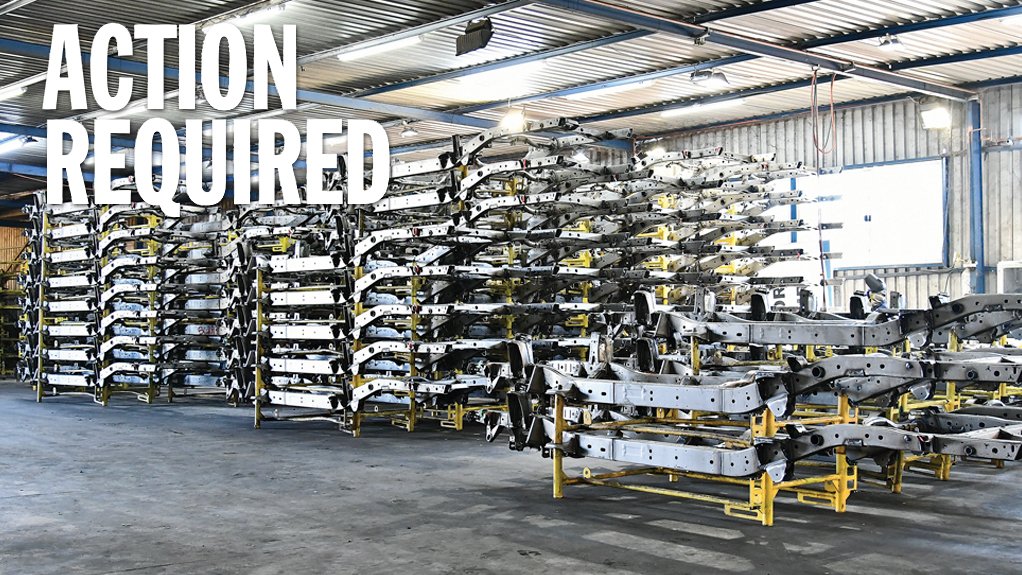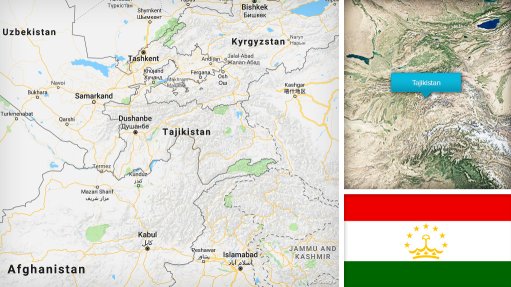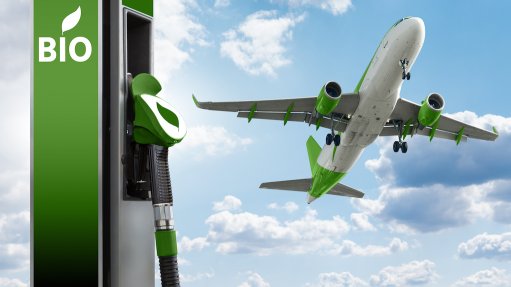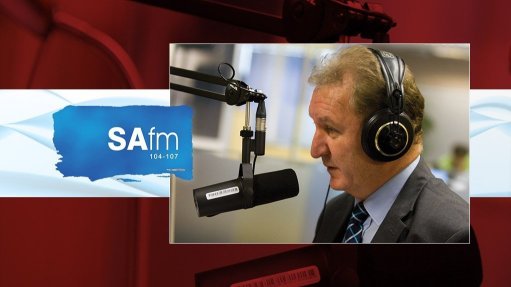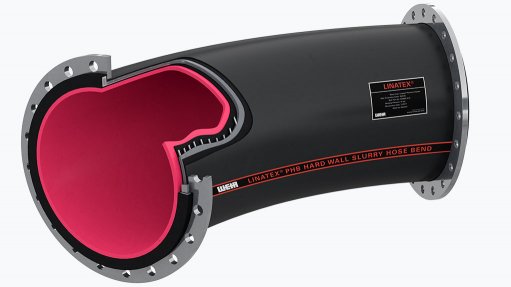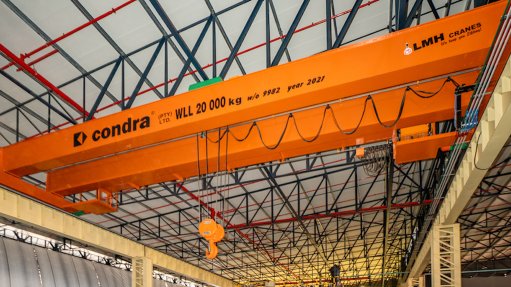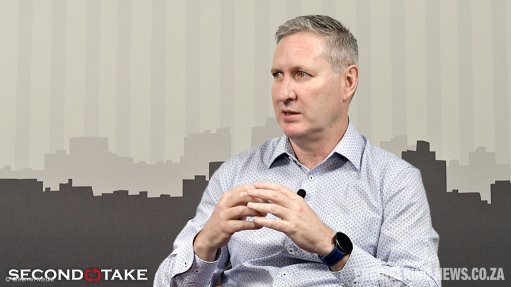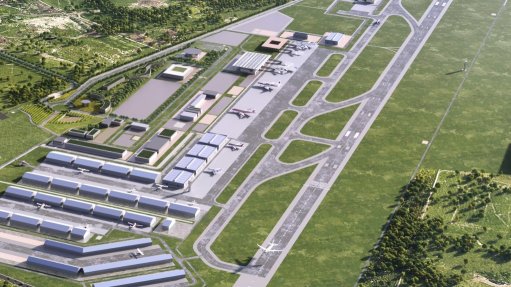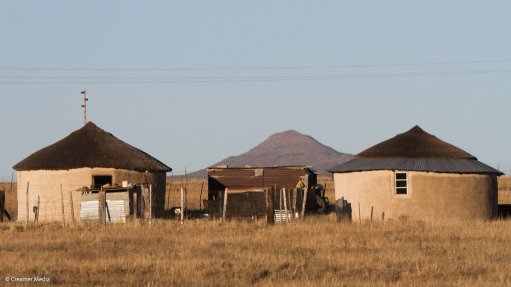NAACAM CEO on key priorities for preserving ‘critical source of industrial capacity’
The global automotive market is facing a shift as profound as the day the first mass-produced vehicle drove off the assembly line. From horse-and-carriage versus car, the conflict has now, more than 100 years later, moved to internal-combustion-engine versus electric.
On top of this, the very companies that invented and refined the automobile as we know it, are being forced to go toe to toe in their own backyard against the ambitious new kid on the block – China.
These same forces are at play in South Africa, but more so with the arrival of a raft of new-market entrants, including those from India, which are taking market share from the more traditional brands – the same brands that have invested heavily in local vehicle manufacturing.
What is also true is that no vehicle plant exists in a vacuum; for every car plant, there are numerous parts suppliers. It’s an intricate and interdependent manufacturing chain, and there is little doubt that margins are under pressure.
Engineering News & Mining Weekly (EN&MW) spoke to National Association of Automotive Component and Allied Manufacturers (NAACAM) CEO Renai Moothilal (RM) to get a status update on South Africa’s parts sector.
EN&MW: Similar to other countries around the world, South Africa has seen a rapid influx of Chinese cars on the road. These new arrivals have been eating into the local market share of the country’s seven vehicle assemblers – Mercedes-Benz, Ford, Isuzu, Toyota, Nissan, BMW and Volkswagen. What is lesser known, however, is what effect the newcomers have had on local component manufacturers that supply their products to these assemblers’ plants.
RM: So, first up, it’s not about vehicles from any single country – China or otherwise.
But yes, South Africa’s domestic vehicle market has indeed shifted and is now dominated by imported vehicles, a trend that has been growing at a rapid pace.
With the country’s new-vehicle market at a roughly 50:50 split back in 2010 in terms of imported vehicles versus locally produced vehicles, the situation has now changed to a market where roughly 65% of the new vehicles sold in South Africa are not assembled locally. That is more prevalent in the non-premium, high-volume segments.
Vehicles from India, China and the EU are the best-selling models in South Africa. However, the EU’s OEMs (original-equipment manufacturers, or vehicle manufacturers, such as Volkswagen or BMW) have invested in local assembly plants in South Africa, and in building up significant export markets for these plants.
The issue about China is the commonly reported internal market price wars currently being waged in that country.
This is artificially decreasing these vehicles’ prices – a phenomenon being aided by the high levels of State funding available to these manufacturers. These vehicles then find their way into global markets, including our own.
When it comes to India, no Indian brand has a full-scale completely knockdown plant in South Africa. Also, brands which are not Indian, but which manufacture a percentage of their vehicles in India, are largely active in South Africa as vehicle importers.
India specialises in small, entry-level vehicles, which have grown in popularity in the local market.
Among the local assemblers, only one brand produces an entry-level vehicle at scale.
The influx of these imported, lower-price point vehicles into the South African market has had a dual effect.
They all arrive fully built, which means, firstly, that there are limited immediate opportunities for local component suppliers, and, secondly, that their presence places continued downward pressure on local assembly volumes.
This can indirectly impact Tier 1 and Tier 2 component suppliers, as their volumes are heavily dependent on domestic OEM output.
In the aftermarket, Chinese brands are also bringing in lower-cost components, which again heightens competition for local part manufacturers.
Should these emerging OEMs opt for local assembly, however, or even component export contracts out of South Africa – perhaps driven to do so by market access regulations or cost considerations – there is scope to integrate South African suppliers into their value chains.
EN&MW: You mention ‘market access regulations’. Are we talking duties? It seems South Africa’s carmakers will ask government to hike the import duties on new cars from 25% to 30% in an effort to level the playing field between vehicle manufacturers and importers. Is this one such access regulation? If so, can it work? Also, what other market access regulations can potentially aid the automotive manufacturing industry?
RM: Yes, additional duties is one of these access regulations, and should be looked at not just for vehicles, but even components being imported into the country.
There are others regulations that can help, such as stricter homologation requirements; greater stock and aftermarket presence requirements; limiting the period for semi-knockdown assembly (*see later question) where key input components are at duty advantages; and requiring independent importers that make use of duty credits to have a minimum level of component exports into their global plants.
Ultimately, my point is that, if South Africa is going to champion domestic manufacturing, it needs a strong, holistic industrial policy.
It cannot only look towards government’s Automotive Production and Development Programme (APDP) to deliver growth, as the APDP has its limitations.
EN&MW: Some pundits argue that it is too expensive to support South Africa’s automotive manufacturing industry, firstly in terms of the cost to government, as well as the cost to consumers in terms of the duties imposed on imported cars. What is your response?
RM: Can South Africa afford the employment losses associated with closing this sector? The automotive manufacturing sector directly employs more than 110 000 people.
And then there is also the significant level of skills and technology transfer we see within the industry, the cross-sectoral links created within economic clusters, as well as all of the services related to manufacturing that have come into existence.
The critique you note is common across the world, yet we are seeing more and more countries looking to implement policies that work to retain, rather than let go of, manufacturing.
The Australian government took a decision about 15 years ago to stop its support to the automotive manufacturing sector and it was lost in no time.
The same can be expected within South Africa, with the main difference being we have a lot more unemployed people than our coffee shops can absorb.
EN&MW: There have been a number of well publicised plant closures in South Africa on the back of what the affected companies describe as increasing competition from Asia, particularly China. The most notable has been the proposed closure of the Goodyear plant in Nelson Mandela Bay, which will cost the region 900 jobs. Can you tell us more about any plant closures in the local automotive value chain? Some have perhaps been less visible than others.
RM: The Goodyear plant closure is one of the more visible examples of the current pressures.
NAACAM has recorded at least 12 plant closures and over 4 000 job losses over the past two years nationally, due to a range of factors. This is a trend that will worsen over the medium term as the US market becomes less accessible owing to the ongoing tariff increase strategy pursued by the Trump administration.
Many of the businesses that could potentially close are suppliers of niche or commodity components where imported alternatives, often from Asia, could undercut their pricing.
Compounding this are rising input costs, particularly in terms of steel and energy, with logistical disruptions at our ports and rail network further squeezing already thin margins.
The net effect is a gradual hollowing out of the domestic supply base, which reduces resilience across the automotive sector.
EN&MW: What is the outlook for survival of the existing bloc of component manufacturers in South Africa? Which sectors have the best chance, and why? Which sectors are currently staring down the barrel of the gun? Should we perhaps also keep in mind that the parent companies of South Africa’s seven local vehicle assembly plants are facing increasing competition from especially China in markets everywhere, with this pressure flowing downstream to their operations in South Africa?
RM: The outlook is mixed. Firms with strong and diverse export channels, differentiated technology or products that are less price- sensitive, such as safety-critical systems, specialised electronics, or precision-engineered components, are better positioned for survival.
Similarly, suppliers that can diversify into adjacent industries such as rail, maritime, or mining can spread their risk.
The sectors most at risk are those producing commodity-type components with high price competition and limited ability to differentiate, especially if they rely solely on local OEM volumes.
These would include goods such as fasteners and fixings, rubber and plastic parts, basic stampings, auto-glass, wiring harnesses, battery cables, basic lighting and high- volume replacement parts like tyres and lead-acid batteries.
And yes, in markets where the local assemblers’ parent companies are themselves under competitive strain, there is less room for OEM-led rescue measures.
EN&MW
: How can the viability of the component sector in South Africa be improved? Or, perhaps tell us first whether it should be preserved? And, if the answer is yes, what can be done to keep it alive?
RM: It should absolutely be preserved. The component manufacturing sector is a critical source of industrial capacity, skilled employment and export revenue.
Preserving it requires a multi-pronged approach.
South Africa has to restore its competitiveness by lowering the cost of key inputs like raw materials, energy and logistics.
We can drive technology upgrades through targeted incentives and blended finance support, particularly for small and medium businesses (SMEs).
We must expand market access via export promotion into global markets, and we must support African regional value chains.
It is also vital to strengthen localisation policies to ensure higher local content in both existing and new vehicle platforms.
Local content has been stagnant under the South African Automotive Masterplan 2035 (SAAM 35) at less than 40% of the average vehicle produced in the country, resulting in no real growth in employment, or other positive economic outcomes.
The goal is not indefinite protection, but building a sustainable, globally competitive component sector, which is exactly what other competing automotive destinations like Thailand, Turkey, India, and so forth, are all doing.
If the component sector is lost, there is no real economic reason for a country to continue having any level of automotive policy or incentive programme.
EN&MW: If China is the world's current manufacturing powerhouse, must the local automotive industry and government not court Chinese component and vehicle manufacturers more actively to set up shop in South Africa?
RM: Attracting investment from new global OEMs, including the Chinese car brands and component makers, can unlock jobs, technology transfer and export potential – if structured correctly.
NAACAM is advocating for investment agreements that require meaningful localisation, skills development, SME supplier development, and integration into domestic value chains.
Without these safeguards, there is a risk of ‘screwdriver’ SKD-assembly operations that bring minimal benefit to local manufacturing – in other words, simply bolting together large, imported subassemblies with very little local content.
There is also a significant opportunity to increase export contracts for South African-made components into some of these Chinese OEMs’ global plants, in exchange for easier access into South Africa’s domestic market.
EN&MW: Under the African Continental Free Trade Agreement (AfCFTA) and SAAM 35, there is a demand for 40% local content on made-in-South Africa vehicles to benefit under the agreement, and to be globally competitive, respectively. Is this a viable number? Can we produce vehicles with 40% local content?
RM: Here we are talking about a 40% Rule of Origin, meaning total value-add across all products from any African country involved in the full manufacturing process, including materials beneficiation.
That is not difficult to achieve, and has to be held at that number if any meaningful assembly plants are to happen on the continent.
If not, low-level SKD assembly plants become commonplace, as we are even starting to see in South Africa now.
NAACAM is clear that this is not the path to true competitiveness and sustainable economic development for the automotive sector.
But it does mean that smart, coherent and coordinated industrial policies are needed across AfCFTA countries, and, to that extent, a pan-African industrialisation pact would serve a purpose.
This ties in with the work being led by the African Association for Automotive Manufacturers.
Compliance to the Rules of Origin will require targeted industrial interventions, improved cost competitiveness, and strategic investment in capability gaps.
Transparent measurement and incentives tied to high-impact localisation opportunities are essential.
EN&MW: Last question – what do you think the next 12 to 24 months have in store for South Africa’s automotive manufacturing industry?
RM: The coming two years will be neutral, if not challenging.
Competition from low-cost imports will intensify.
Energy and logistics costs are set to remain major constraints, and the possibility of further assembly and component plant rationalisation cannot be ignored.
However, there are also opportunities.
The shift towards new-energy vehicles offers space for the creation of new local value chains. A fully developed critical minerals beneficiation strategy and the more active roll-out of the AfCFTA can open up regional export markets.
New, strategic foreign investment, tied to localisation, can also strengthen the local automotive manufacturing industry.
Instances of production volumes lost at specific OEMs can be expected, but there are others that are on an upward curve.
The key will be urgent, coordinated action among government, OEMs, component suppliers, labour and supporting agencies such as the South African Revenue Service, the Industrial Development Corporation, the International Trade Administration Commission of South Africa and other implementation bodies to maintain industrial capacity and prepare for the future mobility landscape.
Article Enquiry
Email Article
Save Article
Feedback
To advertise email advertising@creamermedia.co.za or click here
Comments
Press Office
Announcements
What's On
Subscribe to improve your user experience...
Option 1 (equivalent of R125 a month):
Receive a weekly copy of Creamer Media's Engineering News & Mining Weekly magazine
(print copy for those in South Africa and e-magazine for those outside of South Africa)
Receive daily email newsletters
Access to full search results
Access archive of magazine back copies
Access to Projects in Progress
Access to ONE Research Report of your choice in PDF format
Option 2 (equivalent of R375 a month):
All benefits from Option 1
PLUS
Access to Creamer Media's Research Channel Africa for ALL Research Reports, in PDF format, on various industrial and mining sectors
including Electricity; Water; Energy Transition; Hydrogen; Roads, Rail and Ports; Coal; Gold; Platinum; Battery Metals; etc.
Already a subscriber?
Forgotten your password?
Receive weekly copy of Creamer Media's Engineering News & Mining Weekly magazine (print copy for those in South Africa and e-magazine for those outside of South Africa)
➕
Recieve daily email newsletters
➕
Access to full search results
➕
Access archive of magazine back copies
➕
Access to Projects in Progress
➕
Access to ONE Research Report of your choice in PDF format
RESEARCH CHANNEL AFRICA
R4500 (equivalent of R375 a month)
SUBSCRIBEAll benefits from Option 1
➕
Access to Creamer Media's Research Channel Africa for ALL Research Reports on various industrial and mining sectors, in PDF format, including on:
Electricity
➕
Water
➕
Energy Transition
➕
Hydrogen
➕
Roads, Rail and Ports
➕
Coal
➕
Gold
➕
Platinum
➕
Battery Metals
➕
etc.
Receive all benefits from Option 1 or Option 2 delivered to numerous people at your company
➕
Multiple User names and Passwords for simultaneous log-ins
➕
Intranet integration access to all in your organisation




